Let’s Get Physical with AI
As a solution architect and technology leader, you stand at the intersection of technology and real-world application. For decades, the channel’s value has been clear: integrating best-in-class hardware and software to solve business problems.
But our landscape is shifting at a tectonic pace. The age of AI isn’t just a buzzword; it’s a fundamental threat to the traditional VAR and MSP model. With cloud services sold direct and software becoming increasingly intelligent, the question becomes urgent: where does the channel add unique, defensible value?
How do we remain relevant when the “box-moving” and basic software integration that defined our past are being commoditized?
The Physical Problem
While this identity crisis unfolds, a parallel problem has been growing for our customers—one that standard IT has consistently failed to solve.
Look around at the physical spaces we service. Think of the corporate lobbies, retail showrooms, and museum halls where architects and designers have poured immense effort into creating a specific aesthetic and brand experience.
And what have we, the technologists, been forced to do?
- We’ve had to compromise those designs by stuffing in obtrusive screens, obstructing kiosks, clunky check-in tablets on pedestals, and ugly, dirt-collecting keyboards.
- We did it because there was no other choice.
This compromise isn’t just aesthetic; it’s a functional failure.
- It creates unsafe conditions when operators in an industrial setting have to remove gloves to use a keyboard or touchscreen.
- It creates hygienic risks in healthcare and hospitality with every tap on a shared surface.
- It creates a frustrating, impersonal experience for every guest forced to use a clunky tablet to announce their arrival.
- It raises the “ick factor” of public kiosks used by hundreds of people before us to order food.
These are physical-world problems that the legacy model of a Windows PC tethered to a screen was never designed to handle.
The Integrator’s New Frontier
The opportunity to remain relevant lies not in fighting the commoditization of old IT, but in solving this new class of physical-world problems that our customers are desperate to fix.
The challenge has been the absence of a platform built for this exact purpose.
This is where Physical AI provides opportunities for channel solution architects to innovate in the age of AI.

What Is Physical AI?
Physical AI is technology that transforms any physical surface—like a wall, a countertop, a floor, or a storefront—into a big, fast, simple, hygienic, and intelligent interactive user interface.
Physical AI is what will enable ambient computing at scale.
- Ambient computing is where people interact with the digital world in natural ways—the same ways that we communicate with each other: hand waves, speech, facial expressions, and body language.
- Physical AI is the technology that detects, interprets, and translates these human ways of communicating into computer inputs so that computing can become ambient and blend with environments instead of dominating them.
Why the Channel Should Care
Crucially, physical AI is a technology perfectly positioned for the channel to adopt and thrive. Why?
Because it bridges the gap between the virtual world of AI and the physical world of hardware integration where you excel.
It’s a platform that allows you to leverage your core expertise in hardware, solutions design, and services by delivering complete, value-added physical AI solutions.
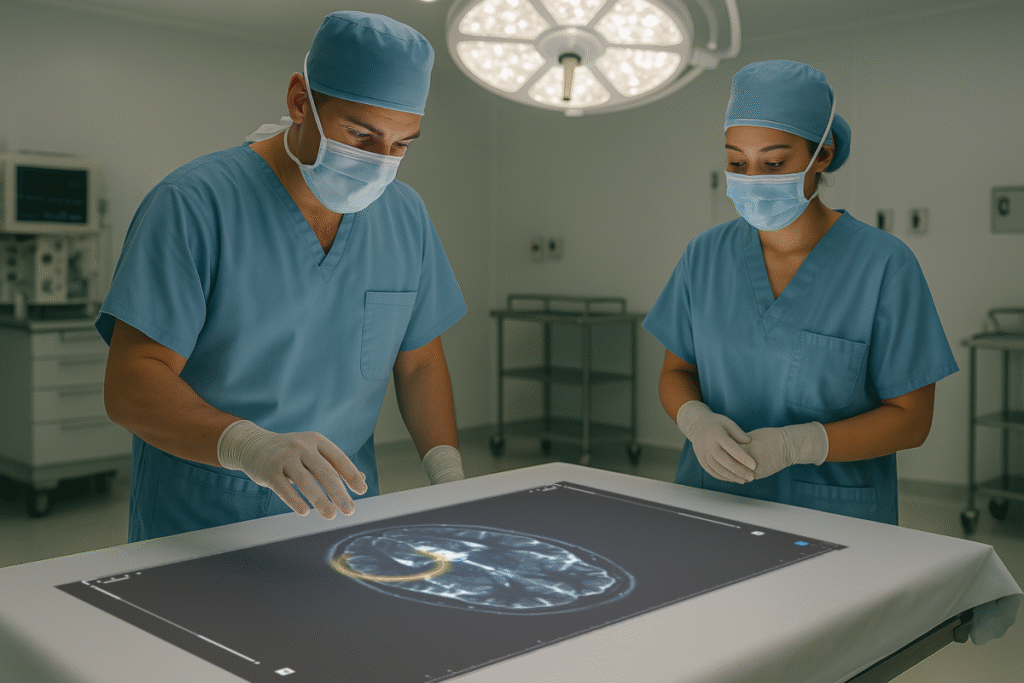
Solving Tangible Problems
The real power of physical AI lies not just in its beautiful simplicity, but in its ability to solve the tangible, real-world problems that have frustrated our customers for years.
It will enable computing to be available in places where it currently is not—operating rooms, clean rooms, busy kitchens, museums, and harsh workplaces.
It allows us, as architects and integrators, to move from forcing clunky compromises into beautiful spaces, creating fluid, intuitive, and truly integrated experiences for visitors, employees, and stakeholders.
Experiences that can:
- Enhance brands by eliminating the “ick-factor.”
- Create immersive and well-differentiated user interfaces.
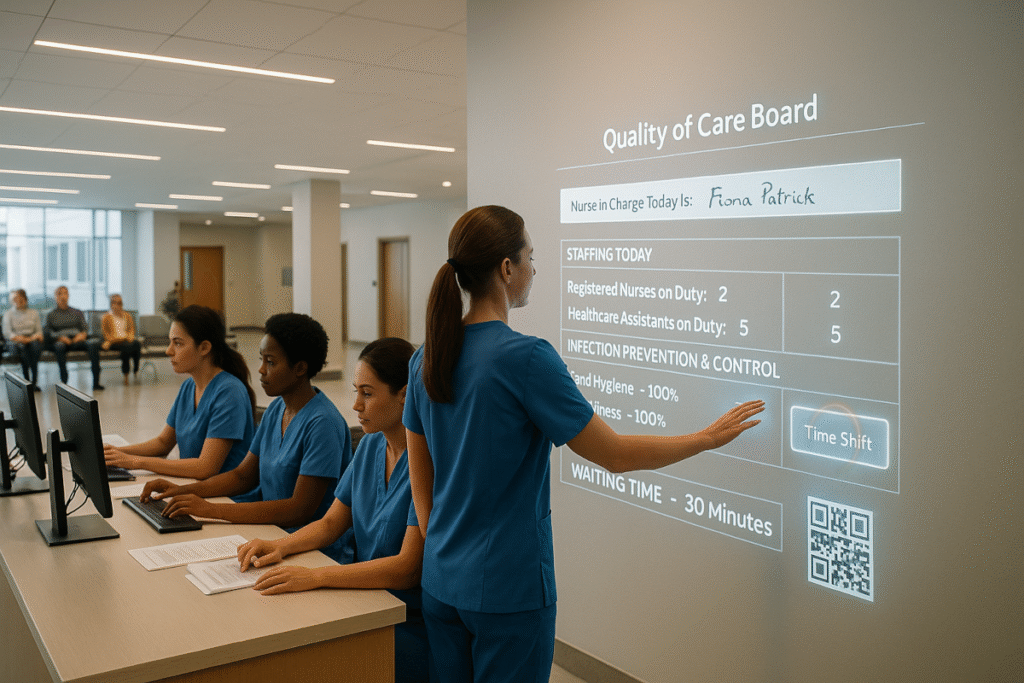
The Unique Advantages of Physical AI
It delivers true hygiene and safety
- The era of forcing every visitor, customer, and employee to touch the same dirty screen is over.
- Imagine a museum exhibit where a dozen children can simultaneously interact with a historical timeline projected across the floor.
- A hospital check-in where a patient can register without touching a single surface.
- In an industrial clean room, a technician wearing thick gloves can manipulate complex machine controls projected onto a stainless-steel wall, eliminating risk and improving workflow.
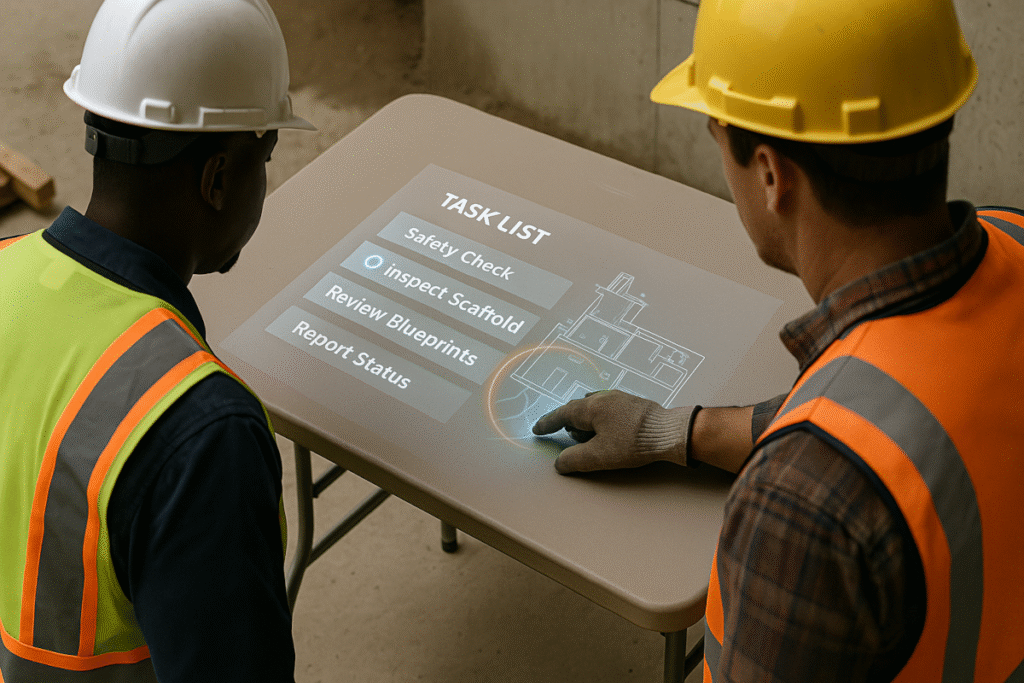
It respects the customer’s environment
- Instead of forcing an architect’s vision to accommodate a black rectangle of plastic and glass, Physical AI allows the technology to disappear into its surroundings.
- An interactive welcome message projected directly onto a marble lobby wall.
- A dynamic menu displayed on the wooden surface of a bar.
This deviceless approach enables you to design the perfect hardware bundle that complements any environment.
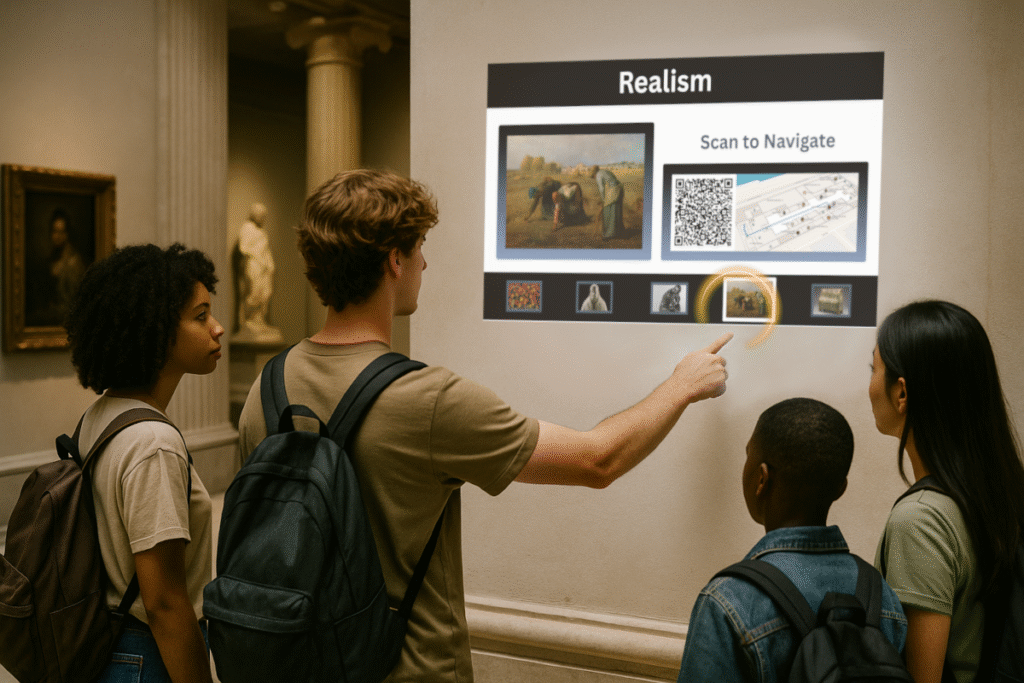
It creates elegant, human-centric experiences
- That frustrating visitor check-in tablet is gone.
- A guest approaches a beautifully paneled wall where the company logo is subtly projected.
- As they get near, the logo animates into a simple welcome message, inviting them to gesture to announce their arrival.
This entire seamless experience is built with technology that ties natural interactions into any web-based backend application, visitor management, or CRM system.
All of this is possible because Physical AI is fundamentally decoupled from the legacy I/O—the keyboard, mouse, and touchscreen—that has limited our solutions for decades.
The Potential: A New Canvas for Interaction
These examples are just the beginning. Physical AI isn’t just a technology; it’s a new, foundational building block for interaction.
For the last 40 years, our thinking has been trapped inside the bezel of a screen. Physical AI removes that boundary and turns the physical world into our canvas.
- Collaborative conference rooms where an entire wall becomes an interactive whiteboard.
- Retail environments where a customer places a product on a countertop and sees specifications, reviews, and accessories projected around it.
- Smart city applications where public transit information is displayed directly on the platform floor, updated in real time.
For integrators, VARs, MSPs, and creators, this is the opportunity to move from being reactive problem-solvers to proactive creators of entirely new experiences—to finally deliver the seamless, intelligent environments that clients have been asking for.
Coming Soon: SurfaceWare™
SurfaceWare™ is a Physical AI built for the channel.
Sign up for updates and discover how SurfaceWare™ can become the cornerstone of your AI products and service offerings.
Be the first to know: Sign up here
About the Author
Jeff Campbell is Head of Product at Hoververse AI, a technology, products, and services company bringing Physical AI to the channel, enabling the next wave of growth.
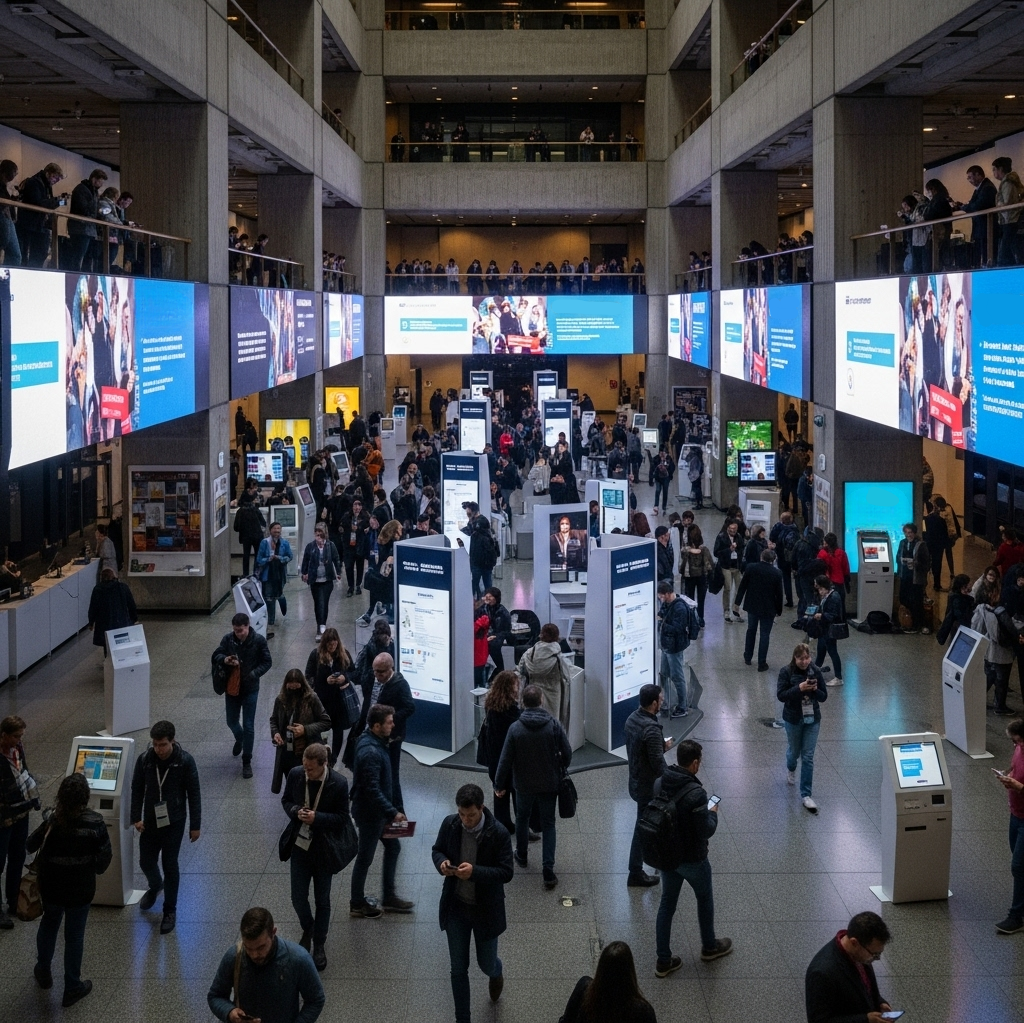
0 Comments